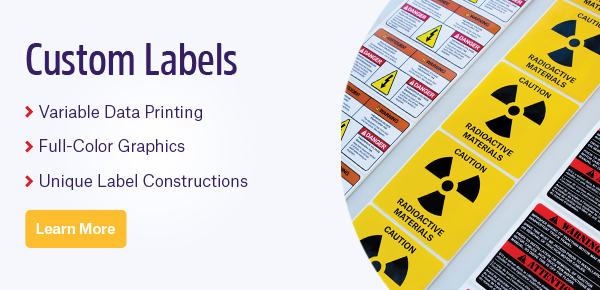 Many industries, including the automotive, agriculture, oil and gas, aerospace, and construction sectors, rely on barcodes for tracking their equipment, inventory, parts, Radio-frequency identification (RFID) technology provides distinct benefits for almost every industrial sector, from the automotive industry and oil and gas to construction and steel manufacturing. When it comes to tracking and tracing items, RFID has numerous advantages over traditional barcodes, such as the ability to scan multiple items simultaneously, without a direct line-of-sight, in addition to added security features and the ability to be re-encoded as many times as needed. As a result of these benefits, some large retailers and companies have begun implementing RFID mandates, requiring outside companies to tag all distributed goods with RFID labels or tags.
Many industries, including the automotive, agriculture, oil and gas, aerospace, and construction sectors, rely on barcodes for tracking their equipment, inventory, parts, Radio-frequency identification (RFID) technology provides distinct benefits for almost every industrial sector, from the automotive industry and oil and gas to construction and steel manufacturing. When it comes to tracking and tracing items, RFID has numerous advantages over traditional barcodes, such as the ability to scan multiple items simultaneously, without a direct line-of-sight, in addition to added security features and the ability to be re-encoded as many times as needed. As a result of these benefits, some large retailers and companies have begun implementing RFID mandates, requiring outside companies to tag all distributed goods with RFID labels or tags.
Walmart and the first RFID mandate
In 2003, Walmart was the first retailer to ask its top suppliers to install RFID tags on each item sold through the giant retailer. It gave these companies a few years to apply the mandate, hoping to increase the efficiency of their supply chain and reduce overall costs. Soon after, Target also asked its vendors to apply RFID tags to all pallets and cases shipped to select regional distribution centers. Other companies that followed suit include Zara, Marks & Spencer, as well as the US Department of Defense (DoD).
This mandate fast-tracked the use of RFID for many manufacturers, many of which would still be using barcodes were it not for these giant retailers. However, it was not the success they anticipated, at least not for Walmart. Many claimed Walmart jumped the gun on issuing the mandate, and only a small percentage of the included companies ended up tagging their crates and pallets with RFID. Furthermore, only around one-third of all stores implemented an RFID-based system.
The problems with Walmart’s rollout of RFID were largely blamed on timing. In 2003, prices were relatively high for RFID technology and many companies weren’t equipped to handle the sudden change, despite the long-term cost savings. There was also less experience from RFID vendors in handling such large operations, and industry standards had not yet been set. Fortunately, for companies like Texas Instruments and Daisy Brands, Walmart provided the impetus for them to transition to RFID and optimize their supply chain.
USDA RFID mandates
In 2019, the Animal and Plant Health Inspection Service (APHIS), a division of the US Department of Agriculture (USDA), announced that it would mandate all cattle and bison moved in interstate commerce to be tagged with RFID. The intention was to have all farms tag their animals by January 1, 2023, as official identification, specifically for tracking animal diseases and protecting against their spread.
Unfortunately, unlike the Walmart mandate, there was enough backlash from farmers across the US that R-CALF USA, a non-profit that represents sheep and cattle farmers, stepped in and tried to legally prevent APHIS from turning the mandate into law, with their main contention that forcing farms to integrate RFID would be much too costly. After much litigation, APHIS finally gave up on the RFID mandate, showing that imposing strict mandates doesn’t work unless at least some participating companies are willing to play ball.
Addressing RFID implementation mandates
There is a significant difference between mandating the use of new technology and allowing companies to decide on their own timelines for adoption. One of the drawbacks to issuing a mandate is how rapidly companies need to work to integrate the system. For large manufacturers, RFID may upend the supply chain and distribution significantly, especially within the first year or two of installation. A group led by Chin-Boo Soon performed an analysis of the effects of RFID mandates and identified the following as critical for implementing RFID on the fly1:
- Know the technology and learn about how it fits in your supply chain
- Focus on your competency and extend the implementation across the supply chain
- Plan for enterprise-wide implementation in the beginning to minimize costly rework
- Decide on the type of information and how it should be reported
- Beware of a likely shift in your operations and have a process in place to mitigate the disruption
- Be knowledgeable about your retailer-supplier relationship to position your strategies
Therefore, based on these recommendations, it’s likely that having a tight partnership with any RFID supplier is essential. It’s especially advantageous to collaborate with one that can customize its products and orders; when RFID implementation is needed quickly, having the capability to tailor the solution means a faster and smoother transition overall. This can help overcome high initial costs and provide more immediate benefits, besides merely satisfying the imposed mandate.
Reference:
- Soon CB et al. Effects of the RFID mandate on supply chain management. J Theor Appl Electron Commer Res. 2008;3(1):81-89.

